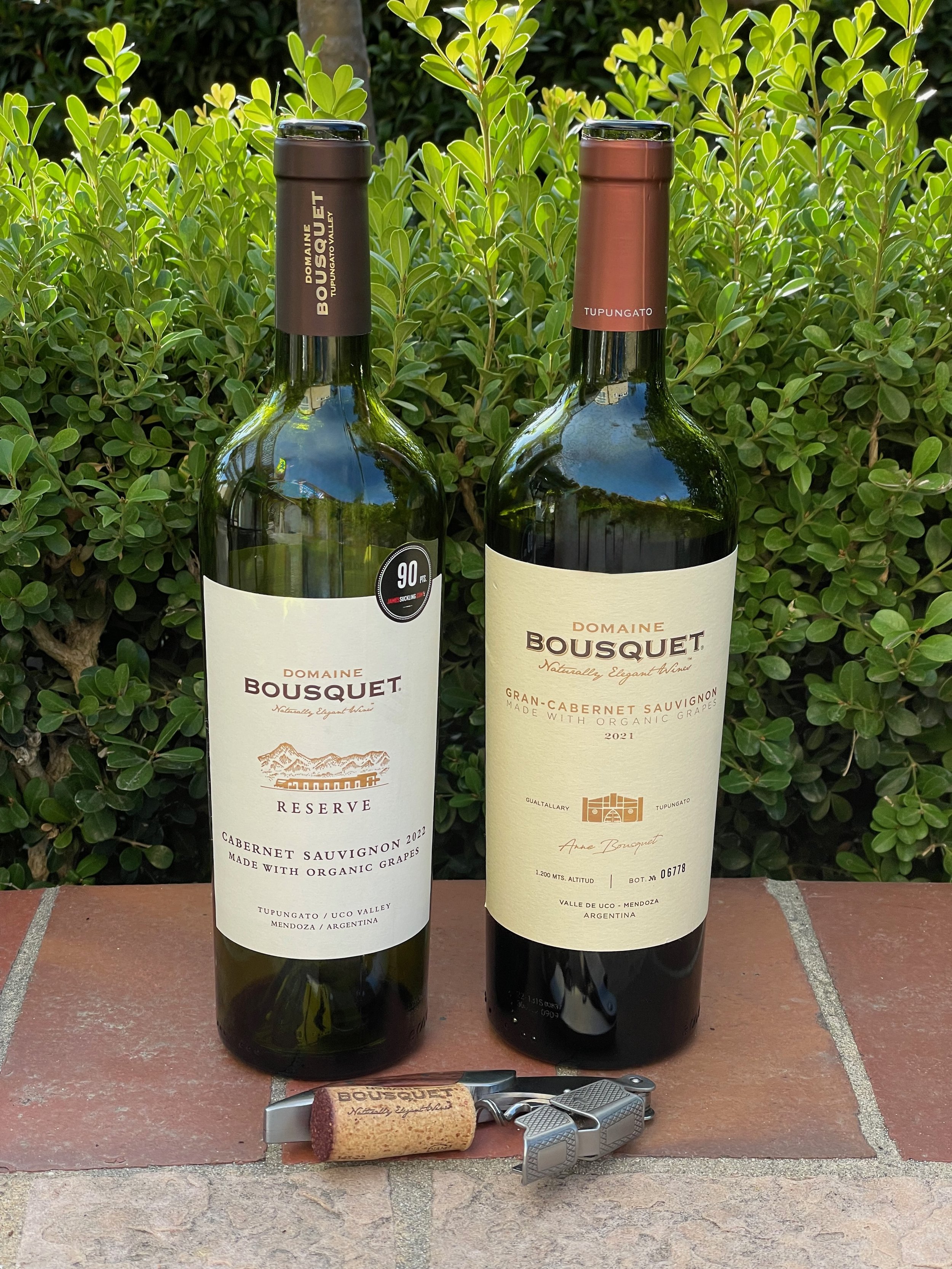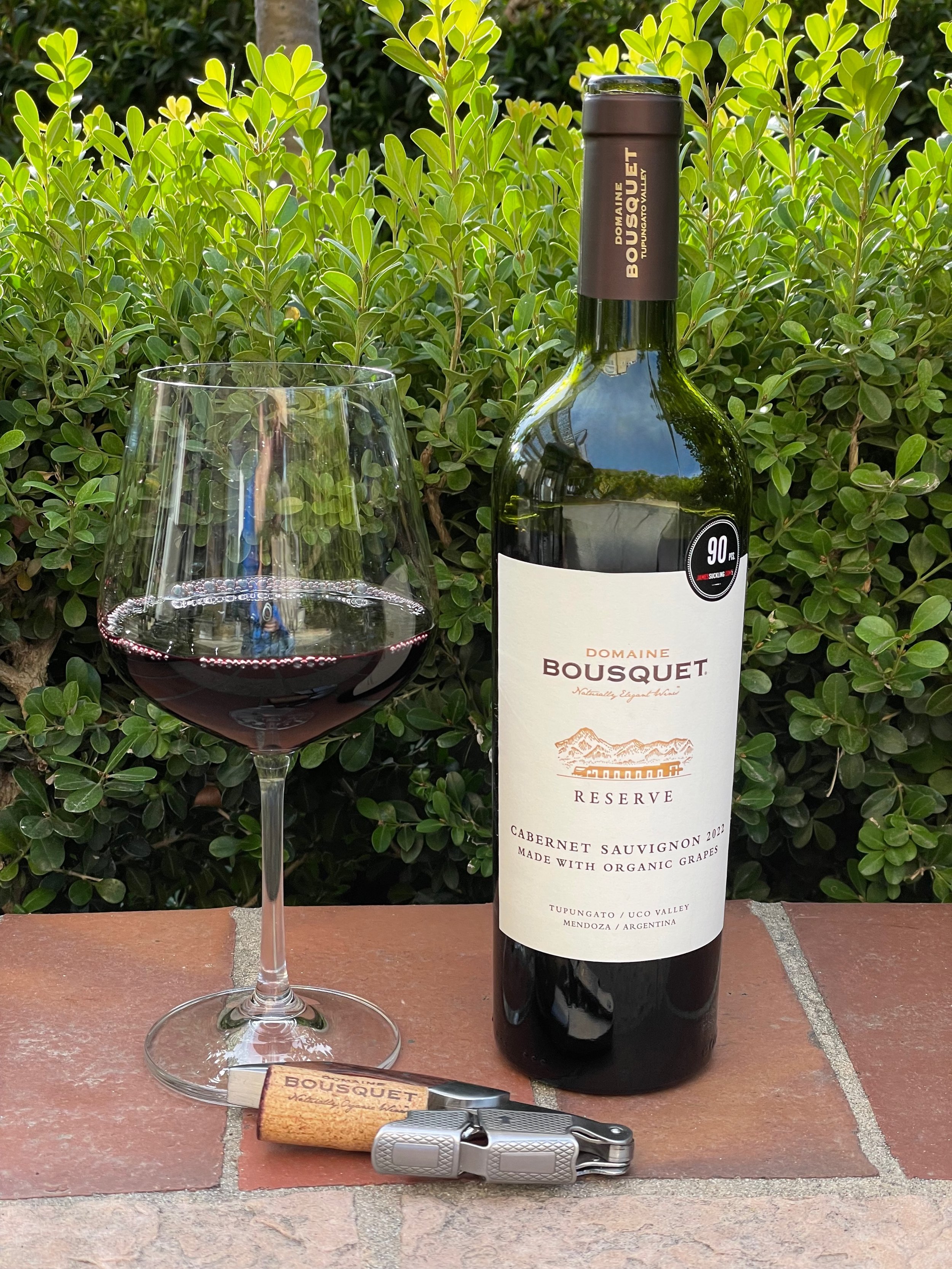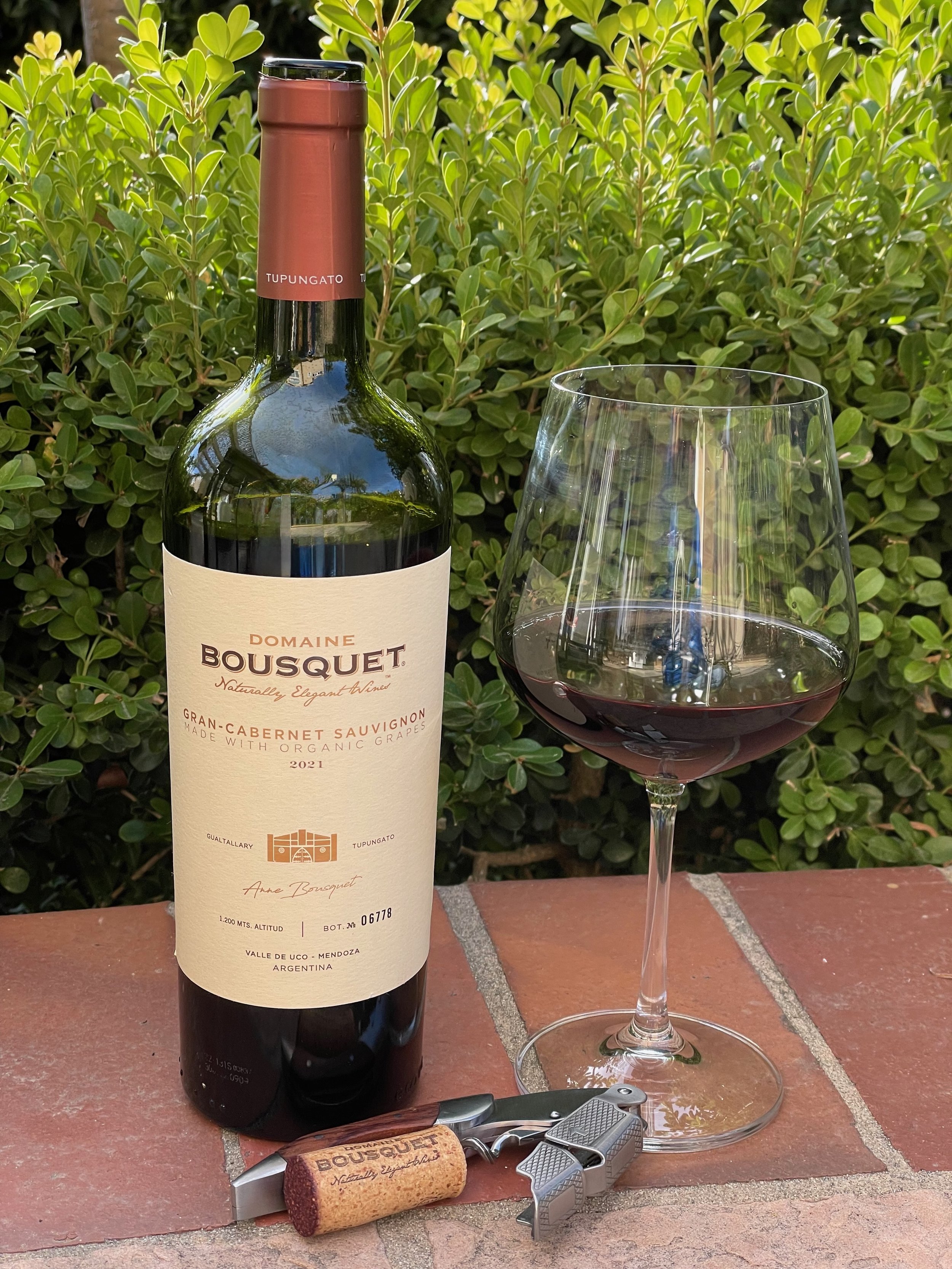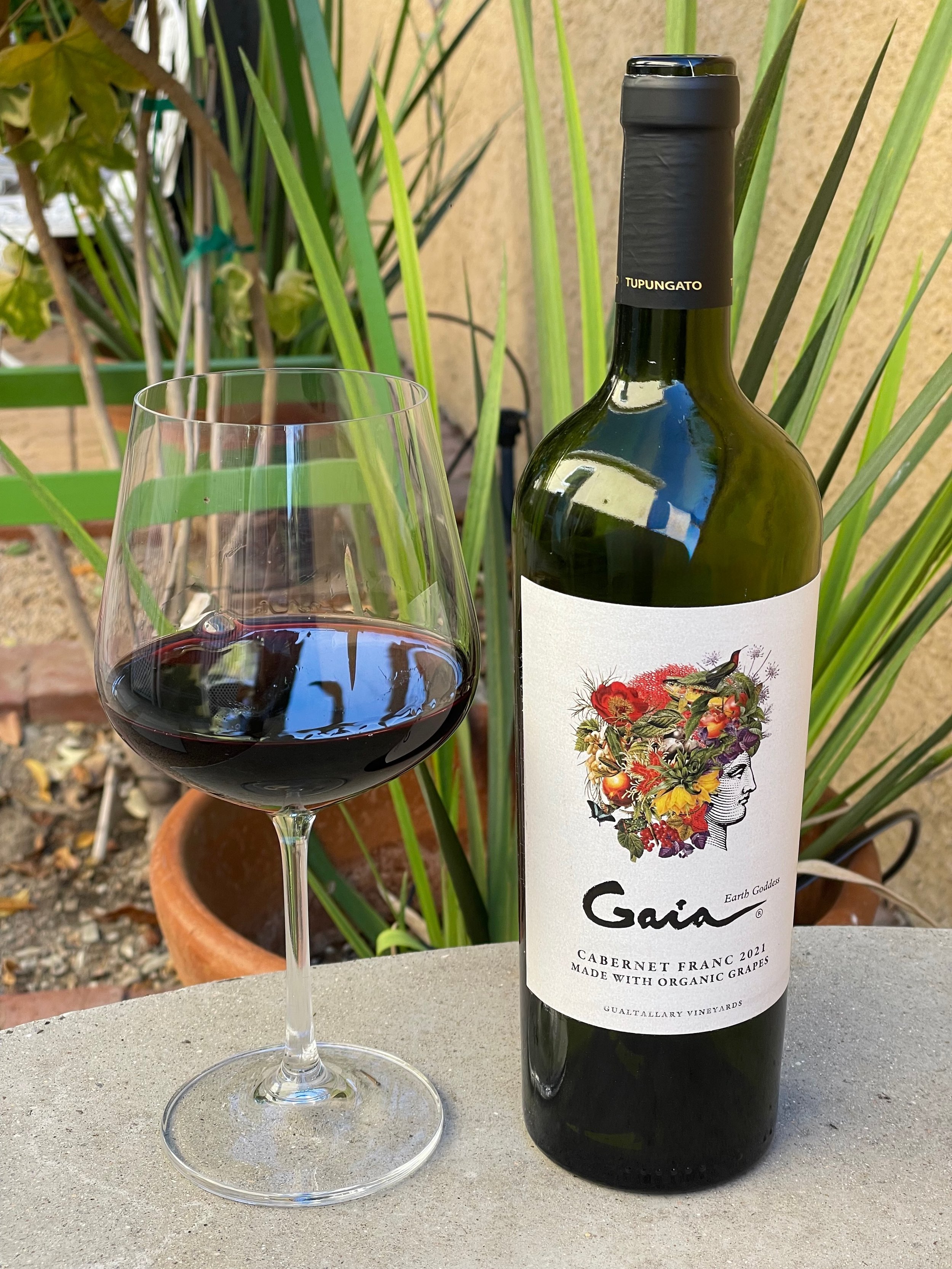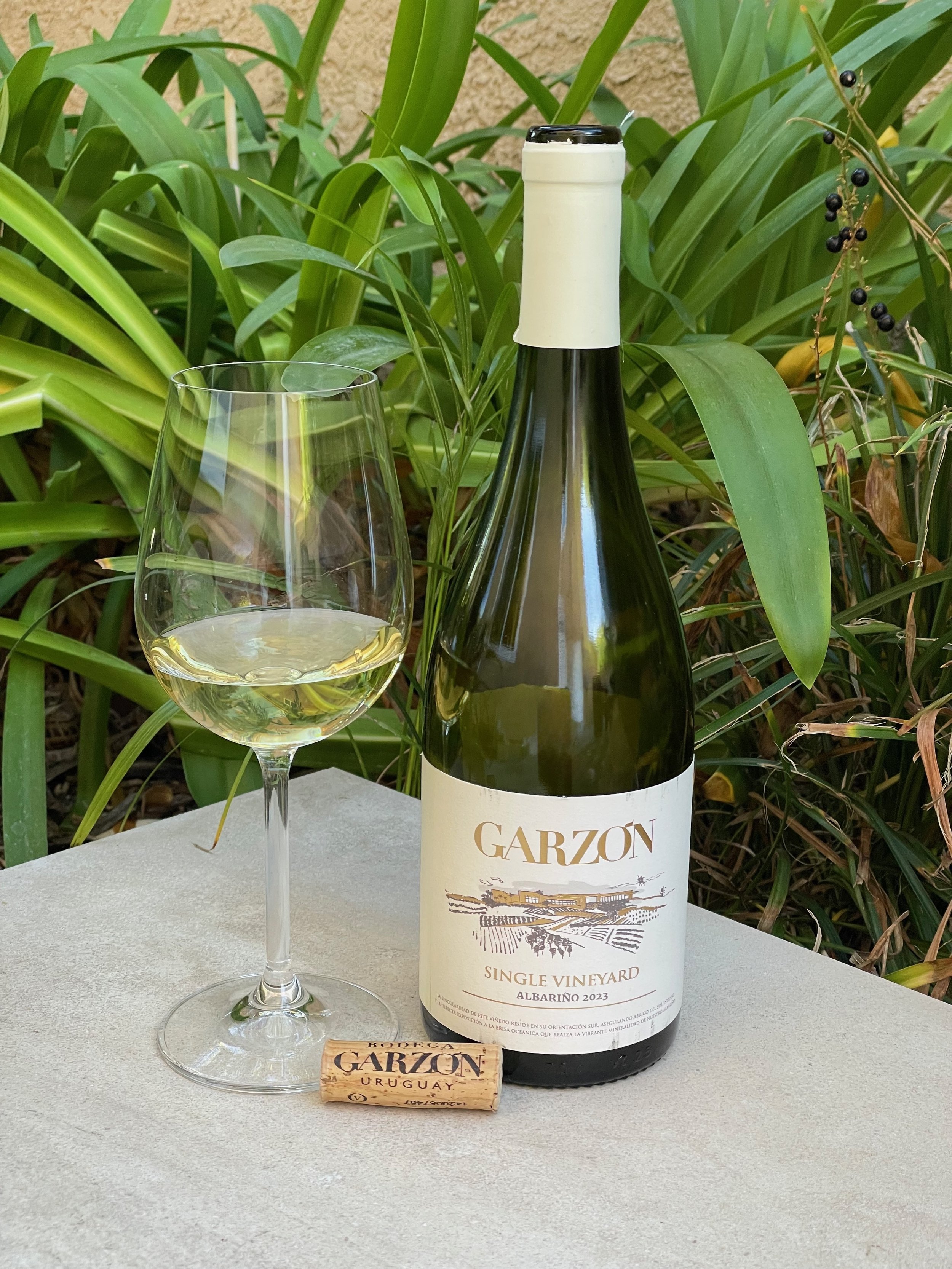Domaine Bousquet, a French-Argentine estate, has achieved success with its certified organic fruit, high-altitude terroir, and unique profile. Their naturally elegant and environmentally friendly wines have gained global recognition, now available in 61 countries. As Argentina’s leading exporter of organically grown grapes, Domaine Bousquet stands out.
From the very beginning, farming organically in the dry and phylloxera-resistant sandy soil of the area was both feasible and wise.
Their wines are made with hand-picked, hand-selected organic fruit, receiving the utmost gentle treatment to minimize handling and intervention.
2022 Domaine Bousquet Reserve Organic Cabernet Sauvignon ($18)
Reserve wines from this family-owned estate are meticulously crafted from hand-picked, organic estate fruit. This Cabernet Sauvignon (85%) is blended with Malbec (15%).
The fermentation process involves the careful selection of yeasts and a 20-day process that includes both a 10-day fermentation and an additional 10-day maceration. Afterward, the wine undergoes a six-month aging period in 400L French oak barrels, with the remaining portion aged in stainless steel and concrete tanks. (ABV: 14.5%, Total Acidity: 5.28 g/L, pH:3.69, Residual Sugar: 1.8 g/L)
Presenting a deep ruby color, this Domaine Bousquet Reserve Organic Cabernet Sauvignon has fresh aromas of black fruit. On the palate, it offers a full-bodied experience with flavors of black fruit, including black plum and black cherry. The wine has moderate tannin and is best served decanted for at least an hour.
2021 Domaine Bousquet Gran Organic Cabernet Sauvignon ($25)
The Gran Bousquet Line blends grapes from four distinct soil types found in the vineyard: sandy, sandy calcareous, stony calcareous, and super stony. This unique approach allows for the creation of diverse components, offering a wide range of styles and blending possibilities.
The wine is composed of 85% Cabernet Sauvignon and 15% Malbec. Fermentation took place in 10,000-liter tanks for 12 days, followed by eight days of maceration. Afterward, it underwent a complete Malolactic conversion before being aged in French oak barrels for ten months (50% new and 50% used). (ABV: 14.5%, TA: 5.2 g/L, pH: 3.68, RS: 3.68 g/L)
The Domaine Bousquet Gran Organic Cabernet Sauvignon has a deep garnet color and a delicate aroma. On the palate, this full-bodied wine has flavors of black fruit, including black cherry. It has medium-high tannin (decant for at least an hour) and medium-high acidity. The oak aging adds a subtle vanilla flavor to the finish.
Domaine Bousquet’s Organic Cabernet Sauvignon wines from the Uco Valley in Argentina are an excellent choice for this week’s Behind the Cork™ Wines of the Week. They’re incredibly affordable, making them a budget-friendly option for all wine enthusiasts. Cheers!
Disclosure of Wine Sample Submission: I received these samples at no cost for review. The opinions expressed are entirely my own.
Media Samples Provided by Domaine Bousquet


